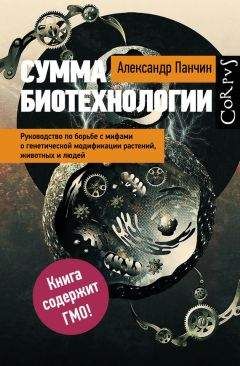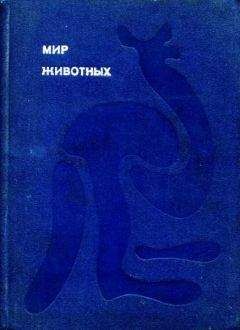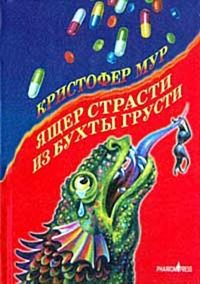267. Smith L.M. et al.: Fluorescence detection in automated DNA sequence analysis. Nature 1986, 321(6071):674–9.
268. Fleischmann R.D. et al.: Whole-genome random sequencing and assembly of Haemophilus influenzae Rd. Science 1995, 269(5223):496–512.
269. Genome sequence of the nematode C. elegans: a platform for investigating biology. Science 1998, 282(5396):2012–8.
270. Analysis of the genome sequence of the flowering plant Arabidopsis thaliana. Nature 2000, 408(6814):796–815.
271. Staden R.: A strategy of DNA sequencing employing computer programs. Nucleic Acids Res 1979, 6(7):2601–10.
272. Adams M.D. et al.: The genome sequence of Drosophila melanogaster. Science 2000, 287(5461):2185–95.
273. Venter J.C. et al.: The sequence of the human genome. Science 2001, 291(5507):1304–51.
274. Lander E.S. et al.: Initial sequencing and analysis of the human genome. Nature 2001, 409(6822):860–921.
275. Initial sequence of the chimpanzee genome and comparison with the human genome. Nature 2005, 437(7055):69–87.
276. Yunis J.J., Prakash O.: The origin of man: a chromosomal pictorial legacy. Science 1982, 215(4539):1525–30.
277. Fan Y. et al.: Genomic structure and evolution of the ancestral chromosome fusion site in 2q13-2q14.1 and paralogous regions on other human chromosomes. Genome Res 2002, 12(11):1651–62.
278. Eid J. et al.: Real-time DNA sequencing from single polymerase molecules. Science 2009, 323(5910):133–8.
279. Mikheyev A.S., Tin M.M.: A first look at the Oxford Nanopore MinION sequencer. Mol Ecol Resour 2014, 14(6):1097–102.
280. Chan I.S., Ginsburg G.S.: Personalized medicine: progress and promise. Annu Rev Genomics Hum Genet 2011, 12:217–44.
281. El-Sohemy A. et al.: Coffee, CYP1A2 genotype and risk of myocardial infarction. Genes Nutr 2007, 2(1):155–6.
282. Muramatsu T. et al.: Alcohol and aldehyde dehydrogenase geno types and drinking behavior of Chinese living in Shanghai. Hum Genet 1995, 96(2):151–4.
283. Bierut L.J. et al.: ADH1B is associated with alcohol dependence and alcohol consumption in populations of European and African ancestry. Mol Psychiatry 2012, 17(4):445–50.
284. Venter J.C. et al.: Environmental genome shotgun sequencing of the Sargasso Sea. Science 2004, 304(5667):66–74.
285. Turnbaugh P.J. et al.: The human microbiome project. Nature 2007, 449(7164):804–10.
286. Arumugam M. et al.: Enterotypes of the human gut microbiome. Nature 2011, 473(7346):174–80.
287. Lamendella R. et al.: Comparative fecal metagenomics unveils unique functional capacity of the swine gut. BMC Microbiol 2011, 11:103.
288. Tazume S. et al.: Effects of germfree status and food restriction on longevity and growth of mice. Jikken Dobutsu 1991, 40(4):517–22.
289. Oresic M. et al.: Gut microbiota affects lens and retinal lipid composition. Exp Eye Res 2009, 89(5):604–7.
290. Ridaura V.K. et al.: Gut microbiota from twins discordant for obesity modulate metabolism in mice. Science 2013, 341(6150):1241214.
291. Vasquez A. et al.: Vaginal lactobacillus flora of healthy Swedish women. J Clin Microbiol 2002, 40(8):2746–9.
292. Tuzhikov A. et al.: TUIT, a BLAST-based tool for taxonomic classification of nucleotide sequences. Biotechniques 2014, 56(2):78–84.
293. Bercik P. et al.: Microbes and the gut-brain axis. Neurogastroenterol Motil 2012, 24(5):405–13.
294. Foster J.A., McVey Neufeld K.A.: Gut-brain axis: how the microbiome influences anxiety and depression. Trends Neurosci 2013, 36(5):305–12.
295. Cryan J.F., Dinan T.G.: Mind-altering microorganisms: the impact of the gut microbiota on brain and behaviour. Nat Rev Neurosci 2012, 13(10):701–12.
296. Panchin A.Y. et al.: Midichlorians – the biomeme hypothesis: is there a microbial component to religious rituals? Biol Direct 2014, 9:14.
297. Brenner S.R.: Blue-green algae or cyanobacteria in the intestinal micro-flora may produce neurotoxins such as Beta-N-Methylamino-L-Alanine (BMAA) which may be related to development of amyotrophic lateral sclerosis, Alzheimer’s disease and Parkinson-Dementia-Complex in humans and Equine Motor Neuron Disease in horses. Med Hypotheses 2013, 80(1):103.
298. Bhattacharjee S., Lukiw W.J.: Alzheimer’s disease and the microbiome. Front Cell Neurosci 2013, 7:153.
299. Hirakawa H. et al.: Dissection of the octoploid strawberry genome by deep sequencing of the genomes of Fragaria species. DNA Res 2014, 21(2):169–81.
300. Shimomura O. et al.: Extraction, purification and properties of aequorin, a bioluminescent protein from the luminous hydromedusan, Aequorea. J Cell Comp Physiol 1962, 59:223–39.
301. Prasher D.C. et al.: Primary structure of the Aequorea victoria green-fluorescent protein. Gene 1992, 111(2):229–33.
302. Chalfie M. et al.: Green fluorescent protein as a marker for gene expression. Science 1994, 263(5148):802–5.
303. Heim R. et al.: Improved green fluorescence. Nature 1995, 373(6516):663–4.
304. Matz M.V. et al.: Fluorescent proteins from nonbioluminescent Anthozoa species. Nat Biotechnol 1999, 17(10):969–73.
305. Terskikh A. et al.: “Fluorescent timer”: protein that changes color with time. Science 2000, 290(5496):1585–8.
306. Livet J. et al.: Transgenic strategies for combinatorial expression of fluorescent proteins in the nervous system. Nature 2007, 450(7166):56–62.
307. Klein R.M. et al.: High-velocity microprojectiles for delivering nucleic acids into living cells. 1987. Biotechnology 1992, 24:384–6.
308. Daniell H. et al.: Transient foreign gene expression in chloroplasts of cultured tobacco cells after biolistic delivery of chloroplast vectors. Proc Natl Acad Sci USA 1990, 87(1):88–92.
309. Zambryski P. et al.: Ti plasmid vector for the introduction of DNA into plant cells without alteration of their normal regeneration capacity. EMBO J 1983, 2(12):2143–50.
310. Mojica F.J. et al.: Biological significance of a family of regularly spaced repeats in the genomes of Archaea, Bacteria and mitochondria. Mol Microbiol 2000, 36(1):244–6.
311. Pourcel C. et al.: CRISPR elements in Yersinia pestis acquire new repeats by preferential uptake of bacteriophage DNA, and provide additional tools for evolutionary studies. Microbiology 2005, 151(Pt 3):653–63.
312. Mojica F.J. et al.: Intervening sequences of regularly spaced prokaryotic repeats derive from foreign genetic elements. J Mol Evol 2005, 60(2):174–82.
313. Bolotin A. et al.: Clustered regularly interspaced short palindrome repeats (CRISPRs) have spacers of extrachromosomal origin. Microbiology 2005, 151(Pt 8):2551–61.
314. Makarova K.S. et al.: A putative RNA-interference-based immune system in prokaryotes: computational analysis of the predicted enzymatic machinery, functional analogies with eukaryotic RNAi, and hypothetical mechanisms of action. Biol Direct 2006, 1:7.
315. Barrangou R. et al.: CRISPR provides acquired resistance against viruses in prokaryotes. Science 2007, 315(5819):1709–12.
316. Jinek M. et al.: A programmable dual-RNA-guided DNA endonuclease in adaptive bacterial immunity. Science 2012, 337(6096):816–21.
317. Jinek M. et al.: RNA-programmed genome editing in human cells. Elife 2013, 2:e00471.
318. Wang H. et al.: One-step generation of mice carrying mutations in multiple genes by CRISPR/Cas-mediated genome engineering. Cell 2013, 153(4):910–8.
319. Gantz V.M., Bier E.: Genome editing. The mutagenic chain reaction: a method for converting heterozygous to homozygous mutations. Science 2015, 348(6233):442–4.
320. Liang P. et al.: CRISPR/Cas9-mediated gene editing in human tripronuclear zygotes. Protein Cell 2015, 6(5):363–72.
321. Ran F.A. et al.: Double nicking by RNA-guided CRISPR Cas9 for enhanced genome editing specificity. Cell 2013, 154(6):1380–9.
322. Tsai S.Q. et al.: Dimeric CRISPR RNA-guided FokI nucleases for highly specific genome editing. Nat Biotechnol 2014, 32(6):569–76.
323. Guilinger J.P. et al.: Fusion of catalytically inactive Cas9 to FokI nuclease improves the specificity of genome modification. Nat Biotechnol 2014, 32(6):577–82.
324. Davis K.M. et al.: Small molecule-triggered Cas9 protein with improved genome-editing specificity. Nat Chem Biol 2015, 11(5):316–8.
325. Maruyama T. et al.: Increasing the efficiency of precise genome editing with CRISPR-Cas9 by inhibition of nonhomologous end joining. Nat Biotechnol 2015, 33(5):538–42.
326. Chu V.T. et al.: Increasing the efficiency of homology-directed repair for CRISPR-Cas9-induced precise gene editing in mammalian cells. Nat Biotechnol 2015, 33(5):543–8.
327. Hemphill J. et al.: Optical Control of CRISPR/Cas9 Gene Editing. J Am Chem Soc 2015, 137(17):5642–5.
328. Nihongaki Y. et al.: Photoactivatable CRISPR-Cas9 for optogenetic genome editing. Nat Biotechnol 2015.
329. Chapman K.M. et al.: Targeted Germline Modifications in Rats Using CRISPR/Cas9 and Spermatogonial Stem Cells. Cell Rep 2015, 10(11):1828–35.
330. Gibson D.G. et al.: Creation of a bacterial cell controlled by a chemically synthesized genome. Science 2010, 329(5987):52–6.
331. Howard T.P. et al.: Synthesis of customized petroleum-replica fuel molecules by targeted modification of free fatty acid pools in Escherichia coli. Proc Natl Acad Sci USA 2013, 110(19):7636–41.
332. Sarria S. et al.: Microbial synthesis of pinene. ACS Synth Biol 2014, 3(7):466–75.
333. Kolisnychenko V. et al.: Engineering a reduced Escherichia coli genome. Genome Res 2002, 12(4):640–7.
334. Posfai G. et al.: Emergent properties of reduced-genome Escherichia coli. Science 2006, 312(5776):1044–6.
335. Malyshev D.A. et al.: A semi-synthetic organism with an expanded genetic alphabet. Nature 2014, 509(7500):385–8.
336. Kim T. et al.: A Synthetic Erectile Optogenetic Stimulator Enabling Blue-Light-Inducible Penile Erection. Angew Chem Int Ed Engl 2015.
337. Ferreira A. et al.: Sickle hemoglobin confers tolerance to Plasmodium infection. Cell 2011, 145(3):398–409.
338. Gao Z. et al.: An estimate of the average number of recessive lethal mutations carried by humans. Genetics 2015, 199(4):1243–54.
339. Novotna M. et al.: Toxoplasma and reaction time: role of toxoplasmosis in the origin, preservation and geographical distribution of Rh blood group polymorphism. Parasitology 2008, 135(11): 1253–61.
340. Pappas G. et al.: Toxoplasmosis snapshots: global status of Toxoplasma gondii seroprevalence and implications for pregnancy and congenital toxoplasmosis. Int J Parasitol 2009, 39(12):1385–94.
341. Flegr J. et al.: Increased incidence of traffic accidents in Toxoplasma-infected military drivers and protective effect RhD molecule revealed by a large-scale prospective cohort study. BMC Infect Dis 2009, 9:72.
342. Hart R., Norman R.J.: The longer-term health outcomes for children born as a result of IVF treatment: Part I – General health outcomes. Hum Reprod Update 2013, 19(3):232–43.
343. Hart R., Norman R.J.: The longer-term health outcomes for children born as a result of IVF treatment. Part II – Mental health and development outcomes. Hum Reprod Update 2013, 19(3):244–50.
344. Brinton L.A. et al.: In vitro fertilization and risk of breast and gynecologic cancers: a retrospective cohort study within the Israeli Maccabi Healthcare Services. Fertil Steril 2013, 99(5):1189–96.
345. Reigstad M.M. et al.: Risk of breast cancer following fertili ty treatment – a registry based cohort study of parous women in Norway. Int J Cancer 2015, 136(5):1140–8.
346. Fan H.C. et al.: Noninvasive diagnosis of fetal aneuploidy by shotgun sequencing DNA from maternal blood. Proc Natl Acad Science USA 2008, 105(42):16266–71.
347. Schneider A. et al.: Population-based Tay-Sachs screening among Ashkenazi Jewish young adults in the 21st century: Hexosaminidase A enzyme assay is essential for accurate testing. Am J Med Genet A 2009, 149A(11):2444–7.
348. Cao A. et al.: Control of beta-thalassaemia by carrier screening, genetic counselling and prenatal diagnosis: the Sardinian experience. Ciba Found Symp 1996, 197:137–51; discussion 51–5.
349. White G. et al.: Clinical evaluation of recombinant factor IX. Semin Hematol 1998, 35(2 Suppl 2):33–8.
350. Sands M.S.: AAV-mediated liver-directed gene therapy. Methods Mol Biol 2011, 807:141–57.
351. Nathwani A.C. et al.: Long-term safety and efficacy of factor IX gene therapy in hemophilia B. N Engl J Med 2014, 371(21):1994–2004.
352. Cavazzana-Calvo M. et al.: Gene therapy of human severe combined immunodeficiency (SCID) – X1 disease. Science 2000, 288(5466):669–72.
353. Hacein-Bey-Abina S. et al.: A modified gamma-retrovirus vector for X-linked severe combined immunodeficiency. N Engl J Med 2014, 371(15):1407–17.
354. Ivics Z. et al.: Molecular reconstruction of Sleeping Beauty, a Tc1-like transposon from fish, and its transposition in human cells. Cell 1997, 91(4):501–10.
355. Collier L.S., Largaespada D.A.: Transposons for cancer gene discovery: Sleeping Beauty and beyond. Genome Biol 2007, 8 Suppl 1:S15.
356. Aronovich E.L. et al.: The Sleeping Beauty transposon system: a non-viral vector for gene therapy. Hum Mol Genet 2011, 20(R1):R14–20.
357. Schmitt T.M. et al.: T cell receptor gene therapy for cancer. Hum Gene Ther 2009, 20(11):1240–8.
358. Clay T.M. et al.: Efficient transfer of a tumor antigen-reactive TCR to human peripheral blood lymphocytes confers anti-tumor reactivity. J Immunol 1999, 163(1):507–13.
359. Roth J.A. et al.: p53 tumor suppressor gene therapy for cancer. Oncology (Williston Park) 1999, 13(10 Suppl 5):148–54.
360. Chen G.X. et al.: Clinical utility of recombinant adenoviral human p53 gene therapy: current perspectives. Onco Targets Ther 2014, 7:1901–9.
361. Collin S.P., Trezise A.E.: The origins of colour vision in vertebrates. Clin Exp Optom 2004, 87(4–5):217–23.
362. Jacobs G.H.: Evolution of colour vision in mammals. Philos Trans R Soc Lond B Biol Sci 2009, 364(1531):2957–67.
363. Panchin A.Y. et al.: Asymmetric and non-uniform evolution of recently duplicated human genes. Biol Direct 2010, 5:54.
364. Yokoyama S. et al.: Molecular basis of spectral tuning in the redand green-sensitive (M/LWS) pigments in vertebrates. Genetics 2008, 179(4):2037–43.
365. Deeb S. et al.: Structure-function relationships in human red/green color vision. Documenta Ophthalmologica Proceedings Series 1993, 56:13–7.
366. Jordan G. et al.: The dimensionality of color vision in carriers of anomalous trichromacy. J Vis 2010, 10(8):12.
367. Mancuso K. et al.: Gene therapy for red-green colour blindness in adult primates. Nature 2009, 461(7265):784–7.
368. Simonelli F. et al.: Gene therapy for Leber’s congenital amaurosis is safe and effective through 1.5 years after vector administration. Mol Ther 2010, 18(3):643–50.
369. Tomita H. et al.: Channelrhodopsin-2 gene transduced into retinal ganglion cells restores functional vision in genetically blind rats. Exp Eye Res 2010, 90(3):429–36.





